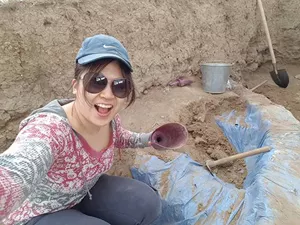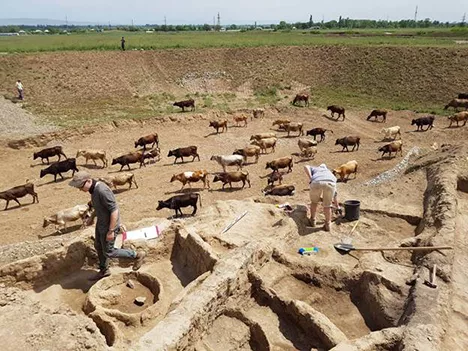
'G.R.A.P.E.' escape
This summer, I was invited by Andrew Graham, co-director of the Gadachrili Gora Regional Archaeological Project Expedition (G.R.A.P.E.) to join the team in the Republic of Georgia this spring as they investigate the origins of wine production and viticulture during the Neolithic Period (+/- 7000 BC). Graham is also the manager of the Li Koon Chun Finance Learning Centre at the Institute for Management and Innovation (IMI). As the 360° Video Correspondent of the G.R.A.P.E. team, I am responsible for filming our journey and finding ways to incorporate virtual reality technologies into archaeological field school instruction.
The 2016 Expedition is in its first year of collaboration between the University of Toronto and the Georgian Wine Association, the National Wine Agency of the Ministry of Agriculture and the Georgian State Museum. Our work falls under the umbrella of a larger international project entitled “Research and Popularization of Georgian Grape and Wine Culture” which aims to investigate the roots of wine production in the ancient world. U of T undergraduate students are working alongside their counterparts from the State University of Tbilisi, Georgia.
For those of you who don’t know, Georgia is the ‘birthplace of wine’. The nation’s 8,000 year history of continuous wine making is preserved within all aspects of Georgian life right up to today. This tradition has received UNESCO’s designation as an ‘Intangible Cultural Heritage’. Intangible cultural heritage includes traditions or living expressions inherited from our ancestors and passed on to our descendants and formal recognition by UNESCO ensures preservation for future generations.
During the past three weeks, my trip has been life changing. The bonds and friendships I formed with my teammates and Georgian hosts will be forever cherished and remembered. Georgia is a country that stands for love, freedom and equality. During my time in Georgia, I feel extremely connected to its culture and with its people.

To enhance our cultural experience, we visited the early Paleolithic site of Dmanisi, the cave city of Vardzia and spent three days in the capital of Georgia, Tblisi. Some of the most famous Georgian cuisines that we eat on a daily basis include khachapuri, khinkali and lobiani (to name only a few!). Overall, Georgian culture is very diverse and mixed with a lot of elements from surrounding regions.
My love for Georgia grows everyday. I look forward to the remaining weeks of my journey working with the G.R.A.P.E Team in discovering more about its ancient roots in wine making.
- www.facebook.com/grape2016
- twitter.com/GadachriliGora
- www.grape.utoronto.ca
- grapeexpedition.wordpress.com
- YouTube Channel (including upcoming 360 degree videos)
